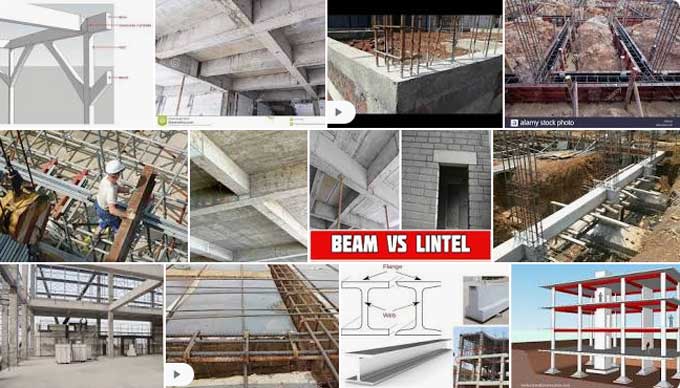
Types of Beams in Civil Engineering
During structural deflection, a beam primarily bends or bends to transfer loads imposed along its axis to its support, such as walls, columns, or foundations. It is possible to classify different types of beam according to the types of supports they provide, the loads they must bear, the shape of their cross-sections, and the materials they are making.
Types of Beam
Cantilever Beam
Unlike other beams, this type of beam contains an end that constrains at one end and an unconstrained end that extends freely. That means one end of this beam has support, and the other end is free, without any support.
Cantilevers are usually rectangular parallelepipeds consisting of length, thickness, and width, or they can be two parallel beams connected at an angle. The beam bends when it receives a load from the fixed end.
Examples of Cantilever Beam
In your daily life, you see cantilevers like the balconies in buildings that fixes on one end and unsupported on the other. You can also find cantilevers on directional signs, swimming pool diving boards, and basketball backboards.
Simply Supported Beam
One of the simplest and most important types of beam is the Simply supported beam. Its name refers to the fact that both the ends support, one with pins and the other with either rollers or pins. When the roller end of the beam uses, it generally experiences both bending and shearing, in addition to translational moments.
Overhanging & Double Overhanging Beam
Overhanging beams are beams whose end portions extend into the air beyond their supports.
Cantilever beam and simply supported beam properties are both present in this beam. Double overhanging beams may have an overhanging portion on both ends and one end.
Continuous Beam
The continuous beam consists of at least two support members. As if it supports by a beam. When a beam has intermediate supports as well as both ends supported, it refers to as a continuous beam. Multiple spans are part of these types of beams.
The most common type of bridge beam is a continuous beam. These beams often have two or more supports along their length. There are many types of continuous beams, each extending over more than two supports located in different points along its length.
Fixed End Beam
Because both ends of this beam are fixed, it cannot rotate or move horizontally or vertically at those ends.
Lintel Beam
Door, window, and ventilation frames usually have lintel beams at the top. Basically, this type of beam limits the load that can apply to the door and window frames. During loading, the upper part of the device transfers the load to the sidewall it is supported on. It is essential for the beam to have a lintel beam.
Statically Determinate Beam
Statically determinate beams are those types of beam that can be determined by applying equilibrium equations to the forces applied on the beam.
Furthermore, it is possible to say that both the numbers of unknown forces and the number of equations are equal in a statically determinate beam.
Bridges often construct from statically determinate structures since temperature changes induce large stresses.
Statically Indeterminate Beam
By applying static equilibrium equations to the beam, the forces applied can resolve or determine. This type of beam calls a statically indeterminate beam.
If the number of unknowns exceeds the number of equations in the type of beam, then the structure is statically indeterminate. Supporting a structure more than is needed for its static stability makes it indeterminate.
T- Beam
It calls a T-beam because it has a cross-section shaped like a T. Generally, the beam and slab are cast as one piece. Therefore, the slab bends longitudinally in conjunction with the beam, which integrates into the slab.
T-beam flanges are the portions that attach to the slab. It calls the web because it is below the flange. As a result, you can select a larger span than a rectangular beam because the beam does not deflect as much.
I-Beam
"I-beams" are beams that shape like letters in the alphabet. Additionally, it is a structural component formed by a central web and a bottom and top crossbar, forming an I. Steel, concrete, or fiberglass may use to make I-beams. Buildings constructed with I Beams generally have many levels.
L-Beam
The L-Beam is structural support that places at the corner of the slab or around its perimeter. L-beams are also the end beams that have a slab only on one side. As they are monolithic, these beams act as L-beams rather than rectangular beams. Buildings with these beams find at the corners where the roof or floor slab is not protruding from the beam, at the corners around stairs or lift openings, etc.
Timber Beam
Most wooden roof trusses utilize timber beams for construction. The columns and posts combined with beams form a frame for the wooden structure. Between each truss's two posts lies the horizontal timber beam.
As well as supporting floor slabs in old houses that makes of timber, this type of beam use to support ceiling beams. The use of proper treatment and care makes timber a durable building material. Nevertheless, with the development of advanced construction materials like concrete, their application has been greatly reduced.
To get more details, watch the following video tutorial.
Video Source: Civil Study


